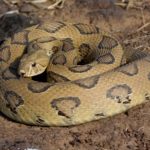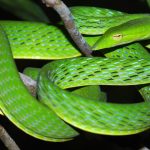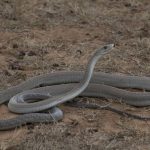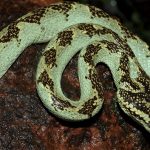Amazonian palm viper is a type of venomous pitviper snake occurring in the Amazon region of South America. The species is arboreal and nocturnal. There are two recognized subspecies of this species.
| Kingdom |
Animalia |
| Phylum |
Chordata |
| Subphylum |
Vertebrata |
| Class |
Reptilia |
| Order |
Squamata |
| Suborder |
Serpentes |
| Family |
Viperidae |
| Subfamily |
Crotalinae |
| Genus |
Bothriopsis |
| Scientific Name |
Bothriopsis bilineata |
| Other Names |
Two-striped Forest-pitviper, Parrotsnake |
| Length |
Generally not more than 70 cm,; however, some specimens may grow to 100 cm |
| Color |
Pale green ground color cover the dorsal surface either with a sprinkle of black spots or are paired with a series of tan or reddish brown spots; ventral sides are bordered by a creamy yellow line running down the length of the body; yellow belly bordered with a bit of green; tail’s latter part is pink bordered with yellow; head is either green with scattered small black spots or green with isolated reddish brown or tan spots bordered in black; pale green iris with yellow green labials often with black spots |
| Distribution |
Colombia, Venezuela, Surinam, Guyana, French Guiana, Ecuador, Brazil, Peru, Bolivia |
| Habitat |
Lowland rain forest; bushes, trees and shrubbery near water in the primary forest as well as old secondary forest near primary forest |
| Diet |
Small mammals like mouse opossums, mice, lizards, birds, frogs |
| Predators |
Birds of prey |
| Venom Fact |
Venomous |
| Breeding Season |
Late summer to winter (April – October) |
| Mode of Reproduction |
Ovoviviparous (producing young ones by means of eggs hatched inside the body of the parent) |
| Litter Size |
6 – 16 |
| IUCN Conservation Status |
Not Evaluated |
Amazonian Palm Viper Pictures Gallery
-
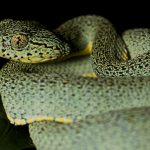
-
Amazonian palm viper Images
-
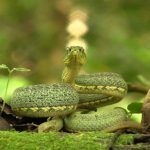
-
Amazonian Palm Viper Photos
-
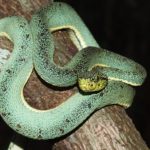
-
Amazonian Palm Viper Pictures
-
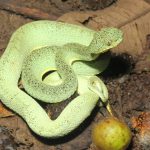
-
Amazonian Palm Viper
-
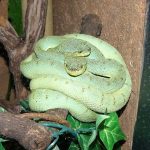
-
Amazonian Palm Vipers
-
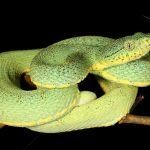
-
Bothriopsis Bilineata
-
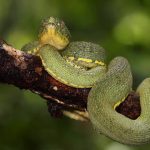
-
Images of Amazonian Palm Viper
-
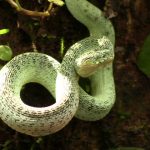
-
Two-Striped Forest Pitviper










